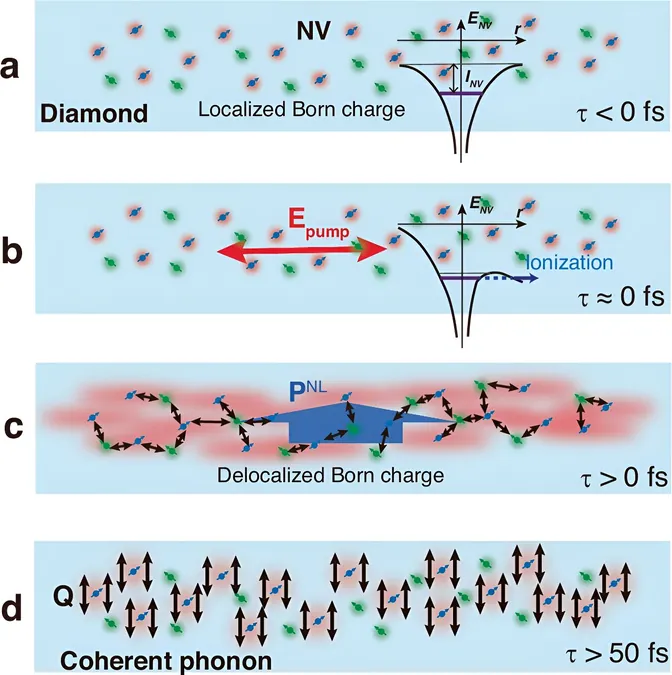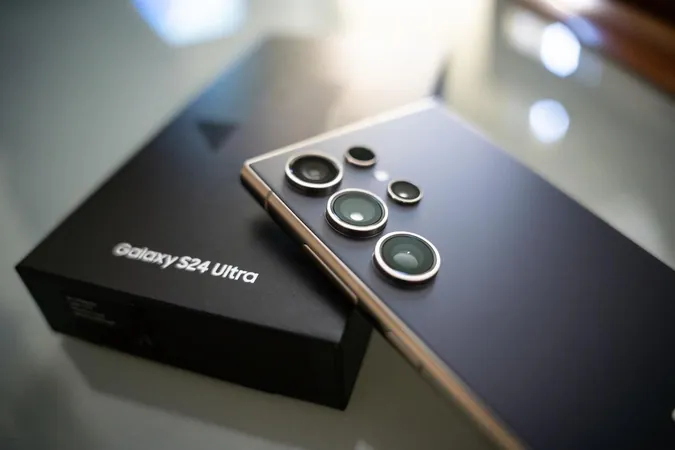
Unveiling the Power of Quasiparticles: New Advancements in Diamond Crystal Research
2024-09-27
Introduction
In a groundbreaking study, a team from the University of Tsukuba has successfully observed the remarkable behavior of polaron quasiparticles, emerging from interactions between electrons and lattice vibrations near color centers found in diamond crystals. This major discovery has important implications for quantum sensing technologies and has been featured in the esteemed journal *Nature Communications*.
Color Centers in Diamond Crystals
The research focused on color centers, specifically nitrogen-vacancy (NV) centers, that emerge when nitrogen impurities create vacancies adjacent to carbon atoms in diamond crystals. These NV centers play a pivotal role in altering the coloration of diamonds and are categorized as lattice defects. Their unique properties make them extraordinarily sensitive to changes in temperature and magnetic fields, making NV centers prime candidates for developing high-resolution sensors—capable of detecting minute environmental variations.
Key Revelations
One of the study's key revelations was the clarification of how the energy levels of electrons in NV centers are affected by distortions in the surrounding crystal lattice. Although it was known that these distortions led to shifts and splits in the energy levels, the precise interaction mechanisms remained largely elusive.
Experimental Methodology
To dive deeper into this phenomenon, the researchers created ultra-thin nanosheets of diamond packed with controlled densities of NV centers, placing them close to the surfaces of high-purity diamond crystals. By bombarding these nanosheets with ultrashort laser pulses, they were able to analyze the resulting changes in reflectance and monitor the lattice vibrations.
Significant Findings
Astonishingly, the outcomes showed that the amplitude of these lattice vibrations increased significantly—by approximately 13 times—despite the low density of NV centers relative to other defects. The research then utilized first-principles calculations to deduce the charge states of these NV centers, revealing a fascinating imbalance of positive and negative charges.
Discovery of Fröhlich Polarons
Polaron quasiparticles, which are identified by their accompanying "phonon cloud," exist in various forms, but an intriguing discovery was made: the proposed Fröhlich polarons, theorized nearly 70 years ago, were shown to materialize from NV centers within the nanosheet setup. This finding opens a wealth of potential for further research and applications in quantum sensing, as it highlights a novel interplay between light, electromagnetic fields, and the fundamental properties of materials.
Implications for Quantum Sensing
The implications of this work cannot be overstated; as quantum technologies continue to evolve, understanding quasiparticles like those stemming from NV centers in diamond crystals will be crucial. These polarons represent new chapters in the quest for advanced sensing devices, potentially transforming industries from telecommunications to healthcare.
Conclusion
As researchers delve deeper, the future of quantum sensing harnessing the unique properties of diamond color centers looks exceptionally promising—stay tuned for what scientific breakthroughs lie ahead!



 Brasil (PT)
Brasil (PT)
 Canada (EN)
Canada (EN)
 Chile (ES)
Chile (ES)
 España (ES)
España (ES)
 France (FR)
France (FR)
 Hong Kong (EN)
Hong Kong (EN)
 Italia (IT)
Italia (IT)
 日本 (JA)
日本 (JA)
 Magyarország (HU)
Magyarország (HU)
 Norge (NO)
Norge (NO)
 Polska (PL)
Polska (PL)
 Schweiz (DE)
Schweiz (DE)
 Singapore (EN)
Singapore (EN)
 Sverige (SV)
Sverige (SV)
 Suomi (FI)
Suomi (FI)
 Türkiye (TR)
Türkiye (TR)